I went to an orthopedic clinic to get custom orthotics because I was experiencing pressure and pain in the little toe of my left foot when I stood or walked for long periods of time.
I thought the pain in my toe was simply due to the size of my shoes, but it turned out that there was a problem with my skeletal structure.
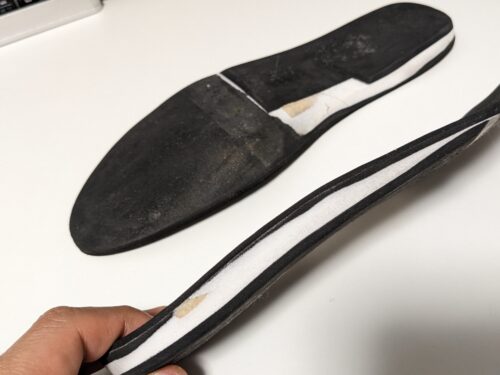
Of course, I still use the inserts.
It has been several months since I started using them, and the presence of the insoles that I felt on the soles of my feet when they were first introduced is now less noticeable.
In other words, my feet have become much more accustomed to the shape and orientation of the insoles. In other words, my feet are being corrected.
However, depending on my physical condition on any given day, I sometimes feel the insoles more.
I have found that when I am tired from carrying a child or a heavy load, the correct position of my feet that the insoles provide is disturbed.
During Golden Week, while walking home to my parents’ house, I thought, “Oh, I’m tired,” and while walking distractedly, I slightly sprained my right ankle. It’s an old injury for me and a place where sprains tend to recur and need attention.
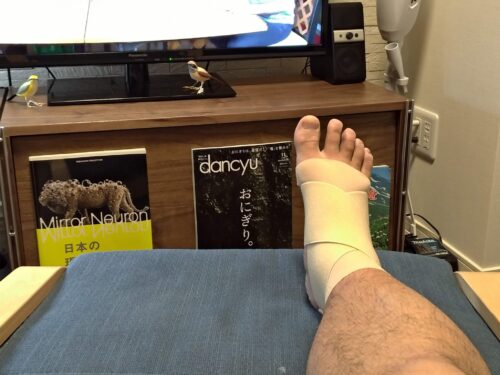
This sprain occurred while I was wearing my custom orthotics.
Fortunately, the sprain did not cause enough swelling, but the pain lasted for some time.
This made me realize that just because I have custom orthotics doesn’t mean my foot fears will go away.
In addition, I have been hiking in the mountains every month lately. I also put custom insoles in my hiking boots, but I feel that it is rather bad for my feet. I feel that it is rather bad for my feet.
During the cold season, I had been hiking at low altitudes of about 200 meters, so I was not worried about it, but in May, I stepped up a gear and climbed a mountain over 1,000 meters high, and my foot twisted slightly again.
This was due to a problem with my posture, but it was also because the custom-made insoles did not emphasize cushioning performance, so my feet kept taking a pounding on the way down the mountain.
It was good that it was a short day trip. If I had made a sudden traverse, I might have injured myself deep in the mountains.
I knew I could not use the custom insoles as they were for mountaineering. It would be better to have insoles made for mountaineering shoes.
I also tried to climb a mountain with the standard insoles that come with mountaineering shoes, but as someone who is used to custom insoles, I felt something was missing, or rather, I felt uncomfortable.
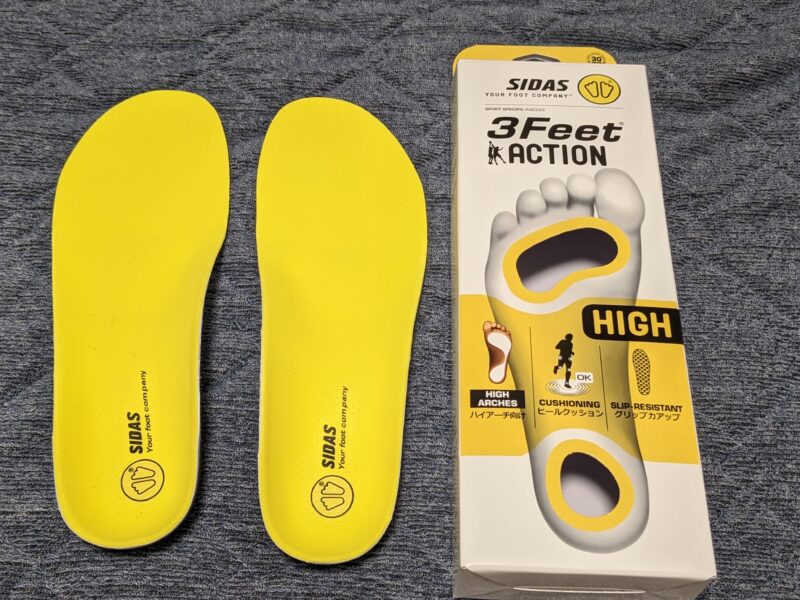
I had never thought about buying commercial insoles in my life.
It is not hard to imagine that changing insoles can improve performance in any sport, not just mountaineering.
But would I pay money for insoles? I was in denial. I was negative because insoles are originally inside the shoes.
But the fact that I ended up buying them was proof that I was getting old.
It sounds good to say, “I’m willing to pay for something better,” but in reality it means, “I’m covering up the deterioration of my physical condition caused by my age by introducing a tool.
Thinking back, when I was young, I used to wear Uniqlo clothes from top to bottom when I climbed mountains. That would be unthinkable now. I choose clothes that are as light as possible, as quick-drying as possible, etc., with an emphasis on functionality. In short, I solve my discomfort with money. However, I simply switched from “all UNIQLO” to “all Mont-bell”.
I bought these insoles called “3Feet Action” from a manufacturer called SIDAS.
These are not mountaineering-specific insoles, but are said to be compatible with a variety of sports.
The most expensive insoles cost nearly 20,000 yen. In some cases, the price of the insoles is higher than the price of the shoes I wear.
If I buy a cheap insole, there is a high probability that I will be disappointed because it is not much different from the insole originally built into the climbing shoes. On the other hand, I’m not sure if the more expensive insoles are right for my body, and I don’t want to pay a lot of money for insoles in the first place.
Therefore, while searching for various products, I took the liberty of creating a market price range of around 5,000 yen in my mind, and this product was chosen from there.
Even with commercially available insoles, there are easy-to-order insoles that are made on the spot at a sporting goods store after your feet are measured. The insoles are prepared in advance and then heated in a special machine to fit the measured foot shape.
I was attracted to this method, but did not choose it. My goal was to buy insoles that would help my feet move their center of gravity and weight to the correct position.
I was afraid that if I measured my feet and made insoles that fit my current foot condition, my feet would get worse rather than better.
I don’t know if this fear was justified or not, but I was not ready to go to a sporting goods store.
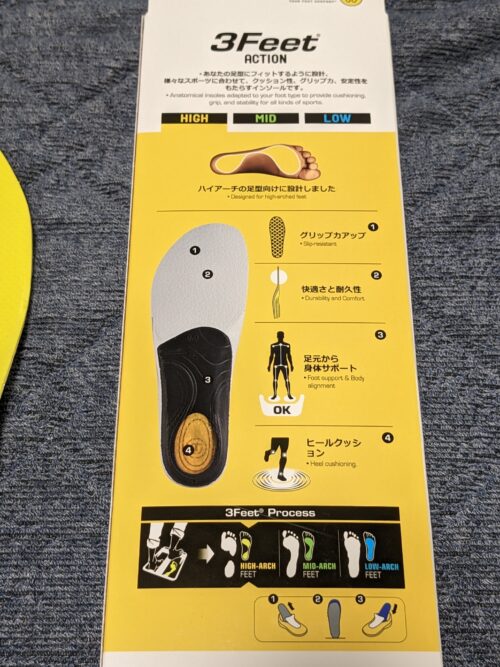
This product is not designed for mountaineering. However, I chose it because of the “3 Feet” product line, which offers three different patterns for different foot shapes.
The three patterns are for people with high arches, standard arches and flat feet.
For people like me who have what is called high arches, there is a “HIGH” model. I appreciate that. I also appreciate the 30-day return/refund policy if you are not satisfied with the results.
Even though they are designed for people with high arches, the height of the arches varies from person to person. I will have to try them on to see if they fit my feet, so for now I will try them and then see if I want to continue using them in the future.
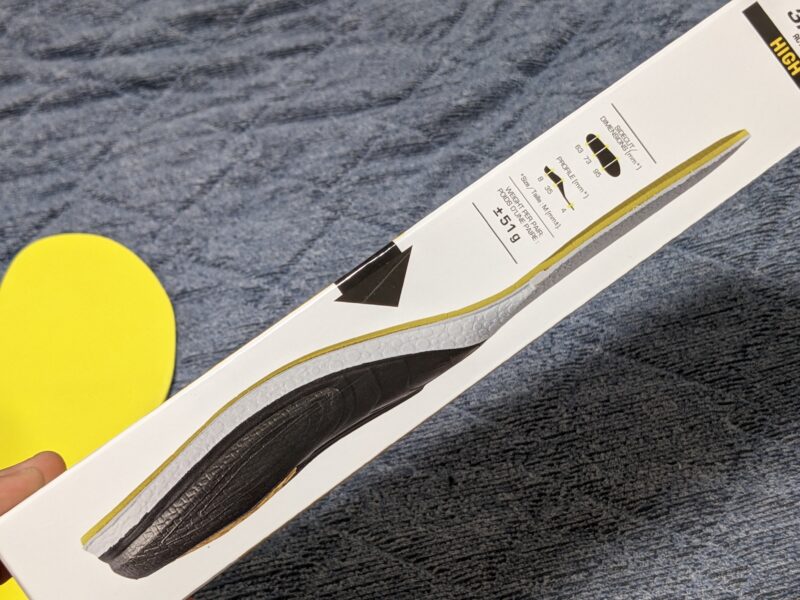
As one would expect from a product that charges money for “just an insole”. From the side, they appear to be very stable.
But this makes it look like they are “providing more heel cushioning” rather than “supporting the foot”.
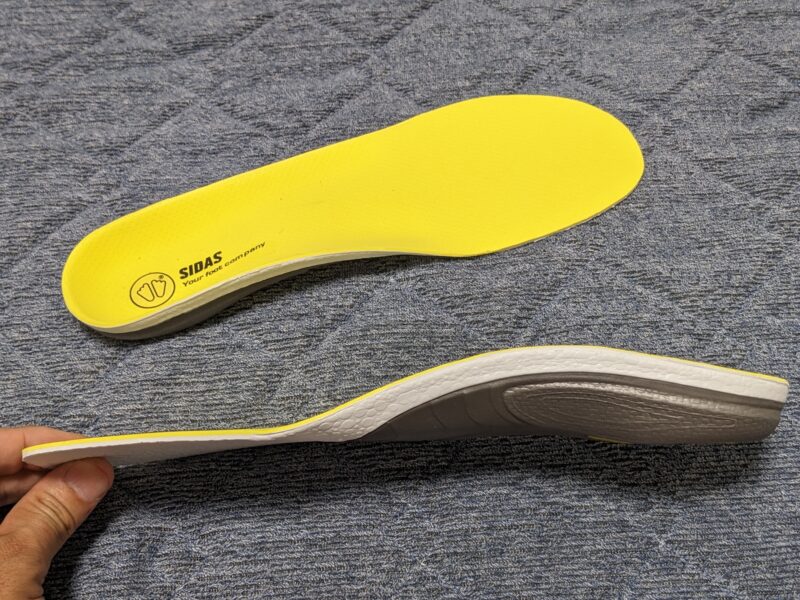
The actual insole removed from its packaging.
This shows how unimportant the toe is in the insole. While the three-dimensional structure from the heel to the arch is strong, the toes are flimsy.
The medical insoles I had made at an orthopedic clinic also had a flimsy toe. So I guess this is the norm for insoles.
Viewed from the side, the heel and toes are raised. I wondered if these insoles would really fit my feet. I was worried.
However, when I looked at the foot orthotics from the top, my worries were allayed. This is because my heel is covered by the insole. What looks thicker from the side is just the edge of the insole, not the heel itself.

Here is a shot of my own foot in the insole.
As you can see, about half of my heel is covered by the insole. It looks like a shoe.
On the other hand, I did not really feel whether the insoles have the ability to support the arch of the arch of my foot. Maybe I will gradually feel it as I continue walking.

The two pictures I have of insoles so far are as follows.
- The heel is filled with cushioning material to absorb shock.
- The protrusion of the insole fits snugly into the arch of the foot.
However, the SIDAS is not designed to follow the shape of the arch of the foot.
It is true that the arch is raised, but at the same time the outside of the foot is also raised.
The heel is also designed to wrap the foot around the insole.
In other words, they work to keep the sole of the foot in the correct position and prevent the center of gravity from shifting during movement.
After wearing SIDAS insoles for a while, I was very convinced. The ankle is a joint that moves freely in all directions, and if it has a strange habit, it can put a lot of stress on the soles of the feet, knees, hips, and other parts of the body.
I had thought that it was simply a matter of preventing foot sprains and avoiding the force of the sole of the foot causing calluses and fish-eyes on the toes, but I learned that these problems were caused by the habit of orienting the ankle. Perhaps it is correct to be more aware of the ankle than the sole.
When I wear medical insoles, I sometimes feel different where the insoles meet the soles of my feet on different days. Since the unevenness of the insole remains the same, this means that the center of gravity of the insole shifts depending on my physical condition. When I mentioned this to the orthotist who made the insoles for me, he explained that the sole of the foot is supported by the ankle, which is a point, so this naturally happens.
When I heard that, I didn’t really understand what he meant. But now that I am wearing these SIDAS exaggerated arch supports, I understand what the orthotist was talking about. When the foot orthosis stabilizes “the point called the ankle,” it stabilizes the entire sole of the foot.
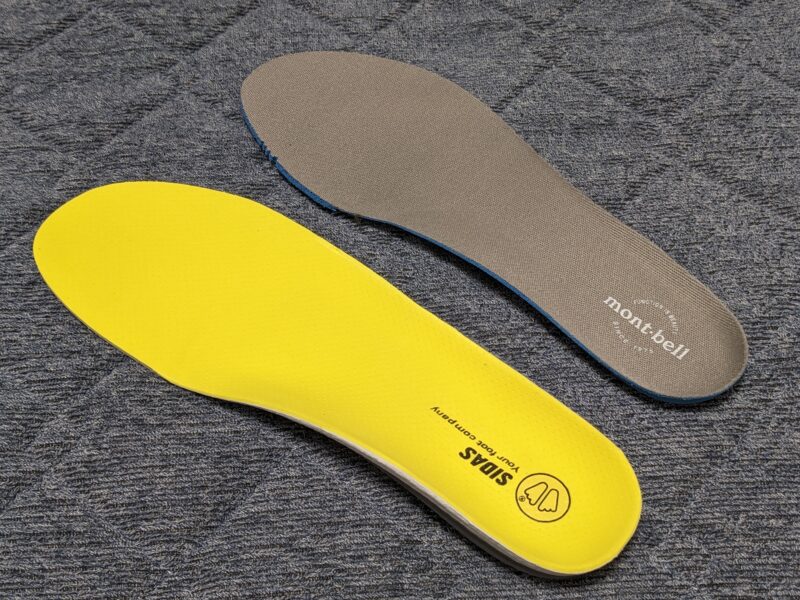
Compared to the insole that came with my current trekking boots, mont-bell’s “Mountain Cruiser 400 BOA Men’s” 28cm.
By the way, the SIDAS size is “27cm-28cm”.
Comparing the two, it is obvious that the mont-bell insole is thinner than the SIDAS insole.
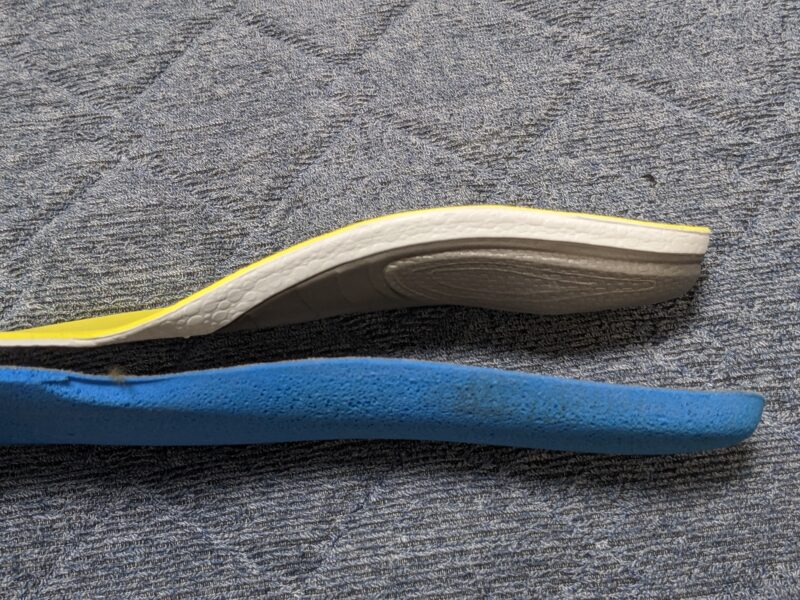
Above: SIDAS, below: mont-bell.
Although mont-bell’s insoles are thinner, you can see from the side that they have some three-dimensional processing; the SIDAS insoles are sold separately and provide more impressive support for the soles of the feet.
It will be hard to tell if this support is right for me until I wear them for a while. Because if I buy a pair of trekking shoes without thinking, put them on, and climb a mountain, the insole will be the one in the photo below. Even with this insole, I wouldn’t feel particularly dissatisfied and say, “Well, it’s probably like this. In comparison, the SIDAS insoles in the photo above are very three-dimensional. Whether this is uncomfortable or effective may vary greatly from person to person.
I would like to try running long distances with these insoles before the 30-day warranty expires. However, due to an approaching typhoon and the rainy season, I have not been able to go to the mountains. I have no choice but to use them only for a very short distance to take my child to and from kindergarten, but I have not come to a proper conclusion yet. However, I think I am probably satisfied with it.
(2023.05.25)


Comments